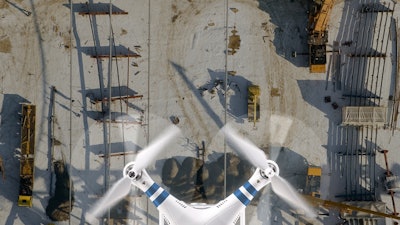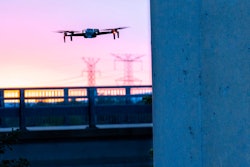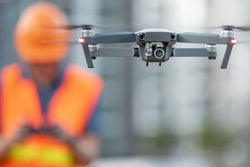
Today’s worksites are complex environments characterized by multiple trades coordinating across multiple tasks, labor challenges, increasing regulation – and a way of doing things that hasn’t changed much in decades. At the same time, advanced technologies, such as drones, have matured to the point where they can have a real impact on how work gets done.
Using drones for tasks, such as inspections and surveys, enables contractors to manage their businesses more effectively by helping them gain valuable situational awareness, increase productivity and safety at the jobsite.
One key driver fueling drone adoption is the availability of end-to-end, turnkey drone services, which require no special expertise on the contractor’s part. Contractor concerns about drone program start-up costs, complexity and liability can be eliminated by a drone services model that ranges from pilots to backend data processing. Third-party drone services also provide support to construction companies that have their own drone divisions by supplementing in-house capabilities with additional equipment, pilots and data processing capacity on demand.
Whether a company is considering third-party drone services to outsource their entire program or complement an internal drone team, there are three key questions to address in the evaluation:
Are they construction jobsite ready?
As often occurs in an emerging technology market, there has been an explosion in the number of companies offering drone services. Whether a contractor is looking to engage a guy working from a garage, start-up drone company or large, established company, the evaluation checklist is still the same. Can the drone services company manage site access: Federal Aviation Administration (FAA) regulation compliance; equipment, flight planning and execution, data collection, analysis and processing, and deliver the data product to your company? Do they have the financial wherewithal to indemnify liability should something go wrong, providing real protection to your company?
The jobsite-ready mentality needs to extend to the drone pilot. After all, a contractor doesn’t want a drone pilot showing up on-site wearing flip-flops. Don’t laugh, that has happened. Construction jobsites are dangerous environments with scores or hundreds of people working; excavators, cranes and other equipment in operation; and material moving around the site.
Drone service providers must have a safety mindset in how they operate. Be sure any drone pilot engaged has been trained to operate in a construction environment – and is familiar with jobsite sign-in processes and wears personal protective equipment (PPE).
Can they handle specific application needs?
Every drone application requires different tools and technical capabilities. Drill down into service provider offerings to determine if they have the skills and experience that is needed for the job at hand. Examples of drone application areas include inspections, volumetric surveys and worksite surveys. Let’s take look closer at the applications and the value they bring to jobsites.
Drone-enabled inspections can significantly increase productivity and safety at a jobsite. The latest advancements in drone technology allow for rapid deployment of lightweight remote sensing drones. These machines accomplish inspections in much less time than it would normally take using scaffolding or lifts for the same purpose.
Materials management is easier and more efficient when a construction contractor has access to aerial images that show exactly where materials are at a given point in time. A drone-based volumetric site survey provides this capability. Advances in the ability to overlap aerial imagery from multiple viewpoints provides the foundation for rapid volume and cut/fill analysis.
Contractors have typically had to spend significant time and expense to acquire survey data with a high degree of accuracy. Today, site master planning, as-built verification and updating of facility records can be achieved in a fraction of the time with drone-based worksite surveys. These surveys can be done within absolute accuracy of less than a fraction of one inch.
Can they provide analytics and answers?
For some construction firms, having data collected and delivered will not provide the deeper understanding that is needed to solve the complex problems they face. These companies should look to a drone service provider that can employ machine learning and artificial intelligence tools to refine drone captured data into analytics and answers.
For example, a contractor managing a laydown yard and may want to track the daily changes that occur. A drone service provider, conducting an inspection survey, should be equipped to employ change detection algorithms to identify moved assets and supplies that may be running low.
Looking at worksite surveys, many construction applications depend on access to engineering-grade 3D data. After collection and verification of drone-collected x,y,z data (the coordinates within a 3D scanned environment), the resultant point cloud (a visualization of the data points in three dimensions) can be leveraged in data analytics. For instance, laser scan data of built assets can be used to create 3D functional models for visualization, planning and systems testing.
When it comes to evaluating third-party drone services, contractors need to look at them as more than just equipment for rent. They should take a holistic approach in the evaluation, examining drone service capabilities, applications expertise and data analytics. Addressing these end-to-end needs will position a contractor to tap drone services and data insights to help manage their businesses more effectively.
Author Biography: Erica Stein is leading the team to offer drone services as part of the Advanced Solutions team of United Rentals.



















